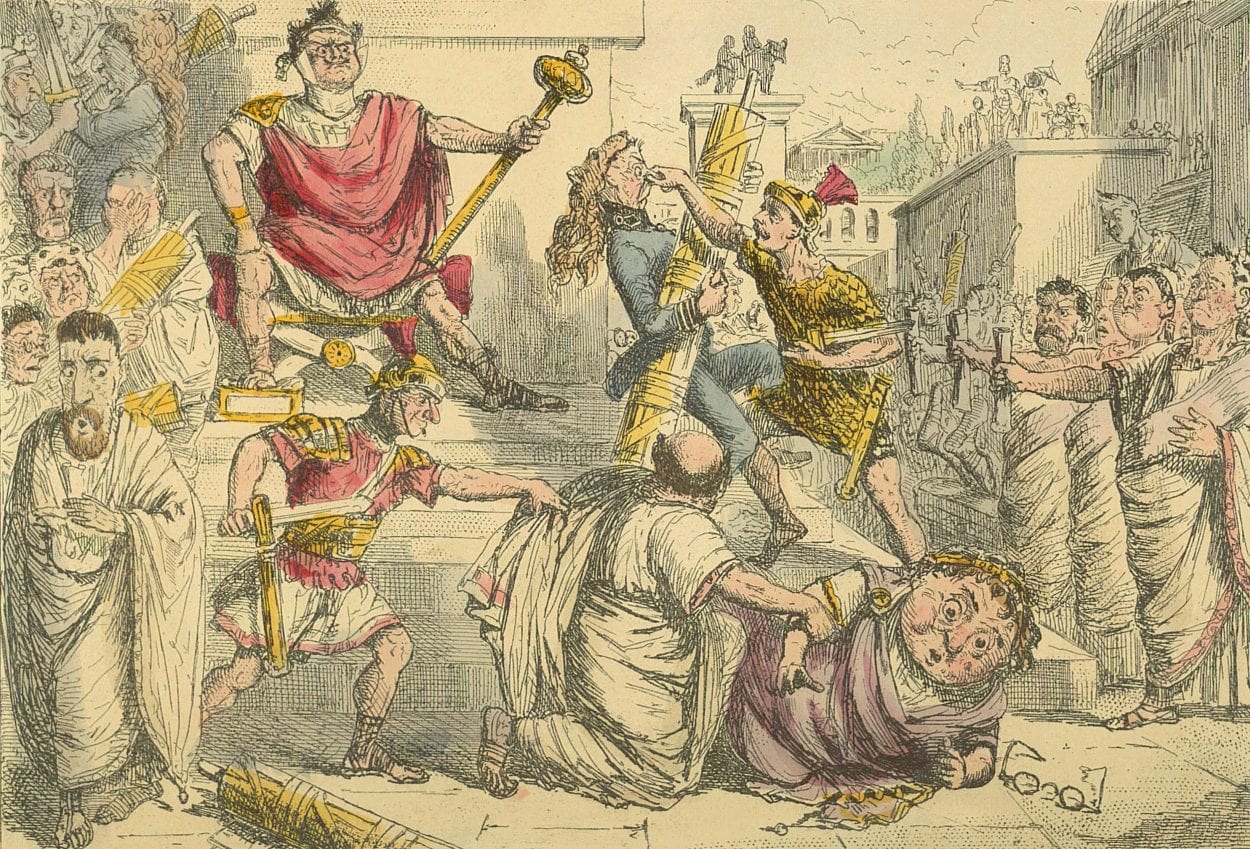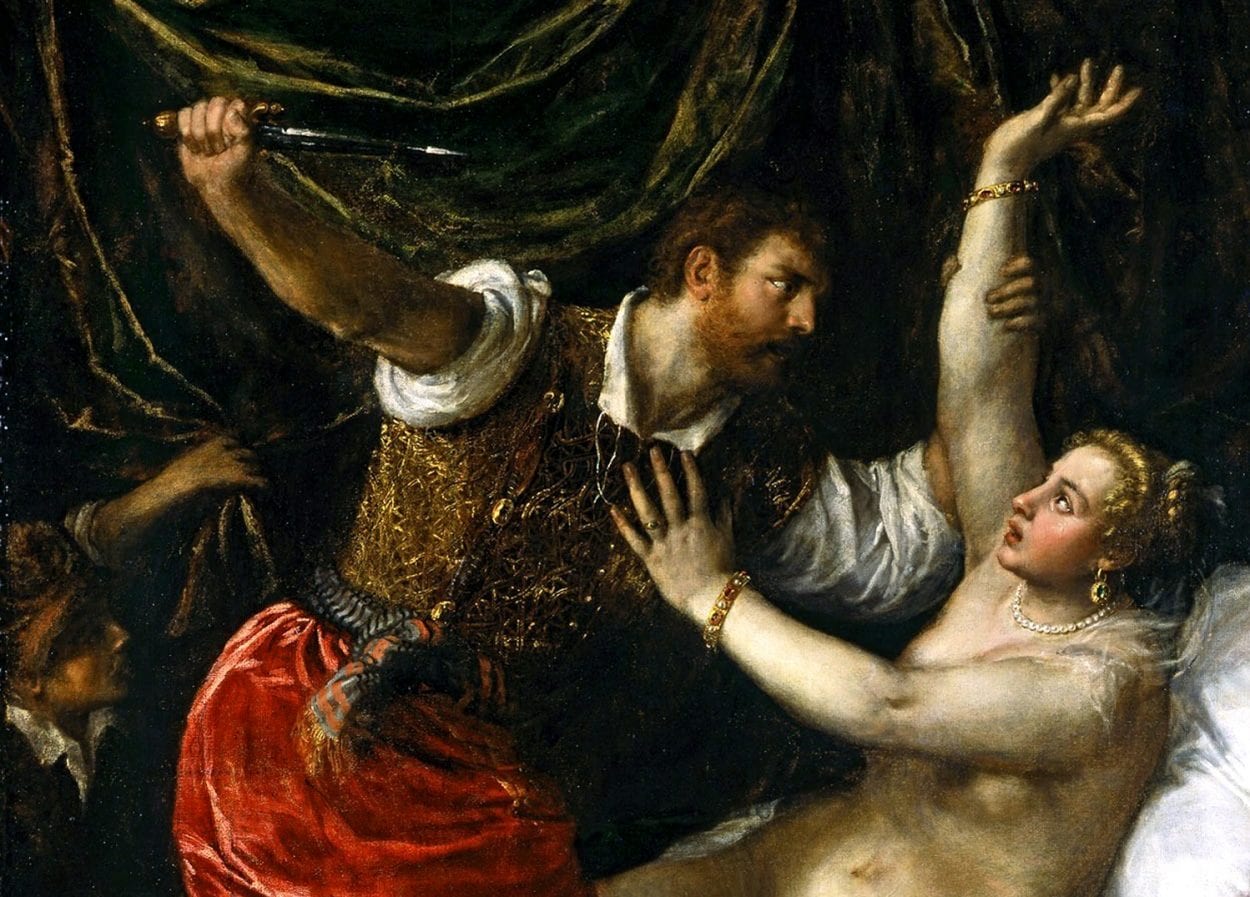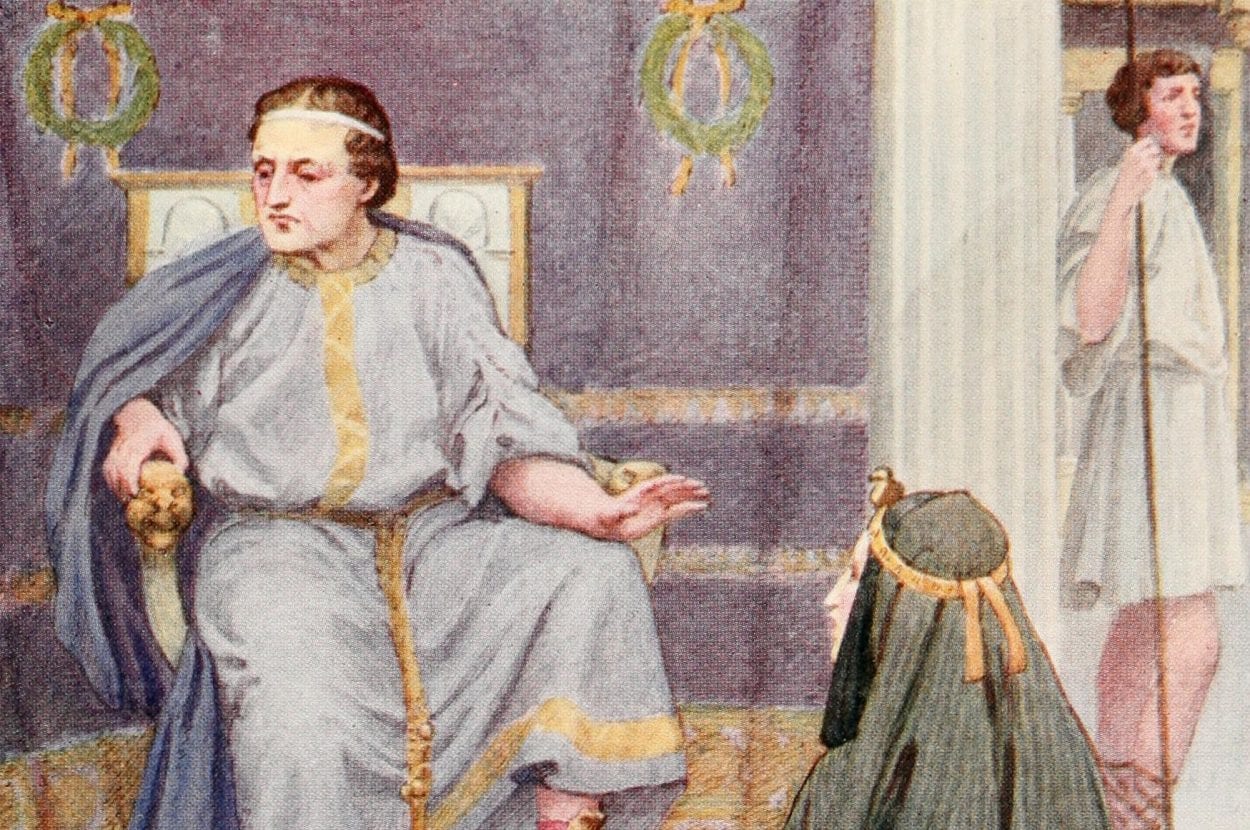Before the foundation of the Roman Republic, Rome was ruled over by a succession of Kings (rex) starting with Romulus, the legendary founder.
Romulus traditionally founded Rome in 753 BC upon the Palatine Hill, after Romulus or one of his followers killed his brother Remus in an argument over where to construct the city. Another variation of the foundation legend states that the augurs favoured Romulus, who ploughed a square furrow to demarcate the walls of the future city. Remus leapt over the “walls” to mock the inadequacy, resulting in Romulus striking him down in anger.
Over the next two centuries, Rome was ruled by a further six kings who held absolute authority over the people and the Senate through the king’s imperium (although the accuracy of this account has been doubted by modern historians). Each king was elected by the people sitting as the Curiate Assembly, who voted on a nominated candidate presented by an interim ruler called an interrex.
When the king died, Rome entered a period of interregnum (a period of time between the reign of one monarch and the next), for which control of the kingdom was devolved to the Senate to find candidate kings for election.
In 535 BC, Lucius Tarquinius Superbus usurped King Servius Tullius by claiming Servius’s illegitimate to rule through his alleged servile origins, and claims that Servius’s ascension without election had strayed from traditional and legal practice via the Curiate Assembly and interregnum.

When Servius came to the Senate to defend his position, he was thrown down the steps of the senate-house by Tarquinius and murdered on the streets by assassins (the place of which became known as Vicus Sceleratus, the Street of Crime).
Tarquinius began his reign by purging senators who could still hold loyalty to Servius’s memory, and judged capital crimes without counsel, thus removing the threat of opposition through the fear of a now corrupt legal system.
After persuading the Latin chiefs of neighbouring tribes to renew their treaty with Rome, Tarquinius then set about waging war with the Volsci, an Italic Osco-Umbrian tribe, and the Latin Gabi that had rejected the terms of his treaty.
Tarquinius used the spoils of these campaigns to fund a series of expensive construction projects and public works in Rome. The most ambitious was the levelling of the Tarpeian Rock on the south side of the Capitoline Hill in order to make way for a Temple in dedication to Jupiter Optimus Maximus.
Around 509-510 BC, Tarquinius went to war with the Rutuli and sent his son, Sextus Tarquinius, on a military errand to the home of Lucius Tarquinius Collatinus, governor of Collatia.

Lucius’ wife, Lucretia, entertained Sextus in her husband’s absence, but that night Sextus entered her bed chambers and gave her two choices: she could submit to his sexual advances and become his wife and future queen, or he would kill her and one of her slaves, claiming that he had caught the pair committing adultery.
The next day, Lucretia went to her father, Spurius Lucretius who was a prefect of Rome, and revealed the rape she endured the night before and stabbed herself in the heart.
In the Dionysius of Halicarnassus it accounts: “This dreadful scene struck the Romans who were present with so much horror and compassion that they all cried out with one voice that they would rather die a thousand deaths in defence of their liberty than suffer such outrages to be committed by the tyrants.”
In another account, Lucretia summoned Lucius Junius Brutus, a Tribune of the Celeres, along with her father, and several witnesses. Believing that she and her family had been dishonoured, she committed suicide, resulting in Brutus proclaiming for the overthrow of the Tarquin family line.
Brutus opened a debate and levelled a barrage of charges against the Tarquin’s that included: the rape of Lucretia, the tyranny of the king, forced labour of plebeians, and the murder of Servius Tullius. A new form of republican government was proposed with two consuls, and power that would later be divided among various elected magistracies.
The king, who had been with the army heard of the developments at Rome and sent ambassadors to the senate, and sought support from his allies in Etruria. Leaving Lucretius in charge of the city, Brutus departed to meet the king upon the field at the Battle of Silva Arsia where the Romans won a hard-fought victory over the king and his Etruscan allies.
Tarquin’s final attempt to regain his kingdom was at the Battle of Lake Regillus, when he persuaded his son-in-law, Octavius Mamilius, to march on Rome at the head of a Latin army. Tarquin and the Latins were defeated, resulting in Tarquin going into exile to the court of Aristodemus at Cumae, where he died in 495 BC.
Header Image Credit : Internet Archive Book Images – Public Domain





